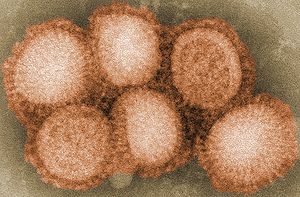
Too dangerous for words
RESEARCHERS are used to explaining scientific processes. Recently they have taken to explaining themselves. As we reported last week, on January 20th scientists who have created a new, more contagious form of bird flu explained in Science and Nature that they would take a 60-day hiatus from their research. The work of Ron Fouchier of the Erasmus Medical Centre, in Rotterdam, and Yoshihiro Kawaoka of the University of Wisconsin-Madison, had created such alarm that American officials had asked the two leading scientific journals to censor it. Drs Fouchier and Kawaoka said that the moratorium would give them time to explain the merits of their work.
Now the would-be censors have offered their own rationale, in a comment published online on January 30th by both publications, leaving the virus as just about the only party not to weigh in on the matter. Paul Keim, a who chairs America’s National Science Advisory Board for Biosecurity (NSABB), argues that he and his colleagues “found the potential risk of public harm to be of unusually high magnitude” and that the “NSABB was unanimous that communication of the results in the two manuscripts it reviewed should be greatly limited in terms of the experimental details and results.”
More interesting, perhaps, is Dr Keim’s question-and-answer session with Nature, posted beside the NSABB’s open letter. No matter, Dr Keim argues, that Dr Kawaoka’s virus is not highly pathogenic. His methods could be used to create a more dangerous virus.
Bookmark this page for “flu research” and check back regularly as these articles update on a very frequent basis. The view is set to “news”. Try clicking on “video” and “2” for more articles.







